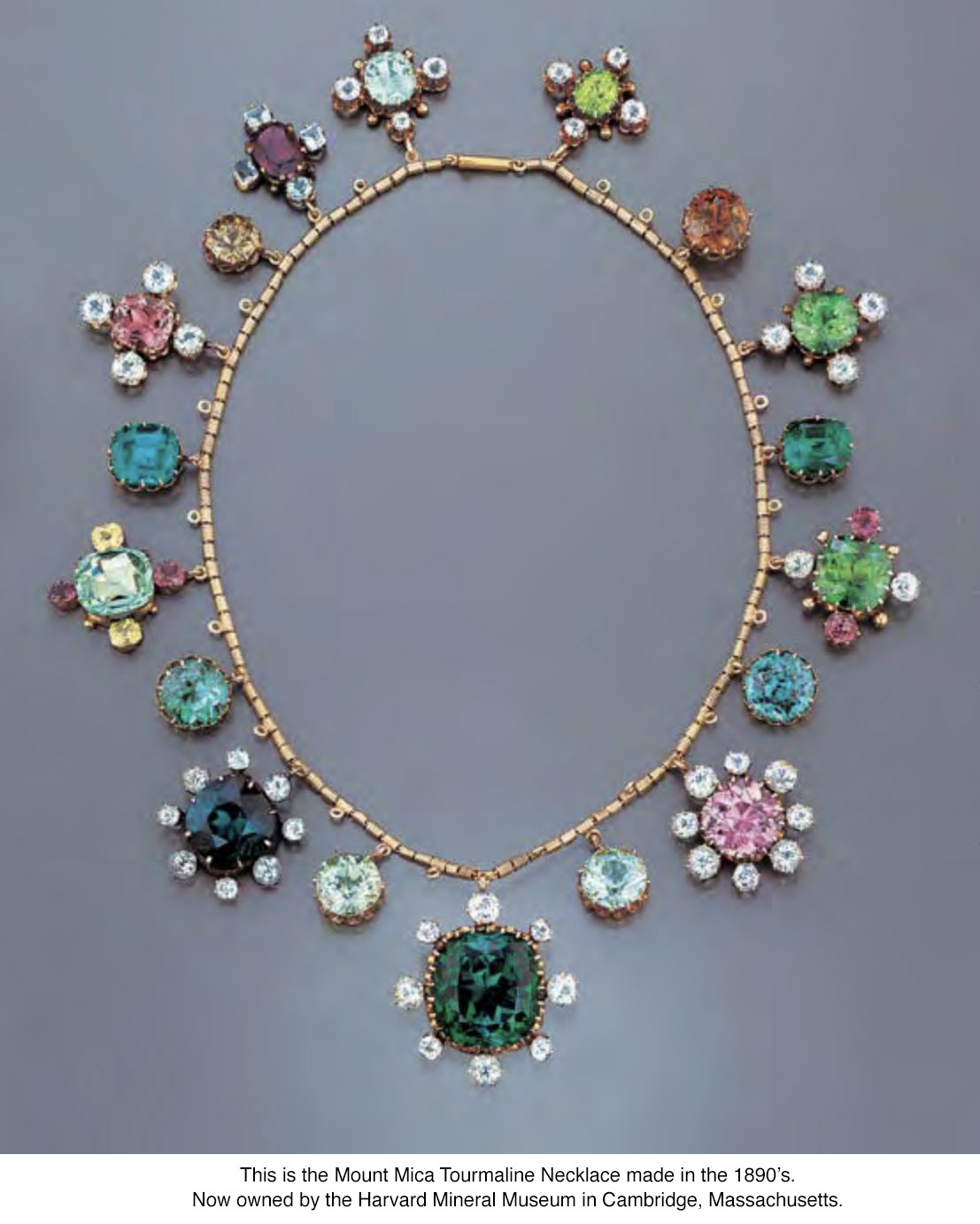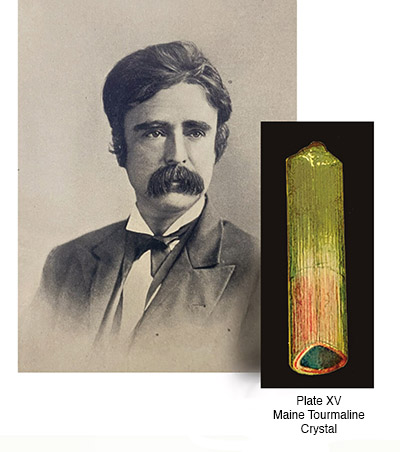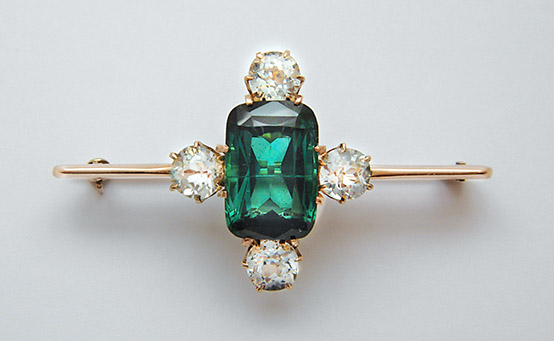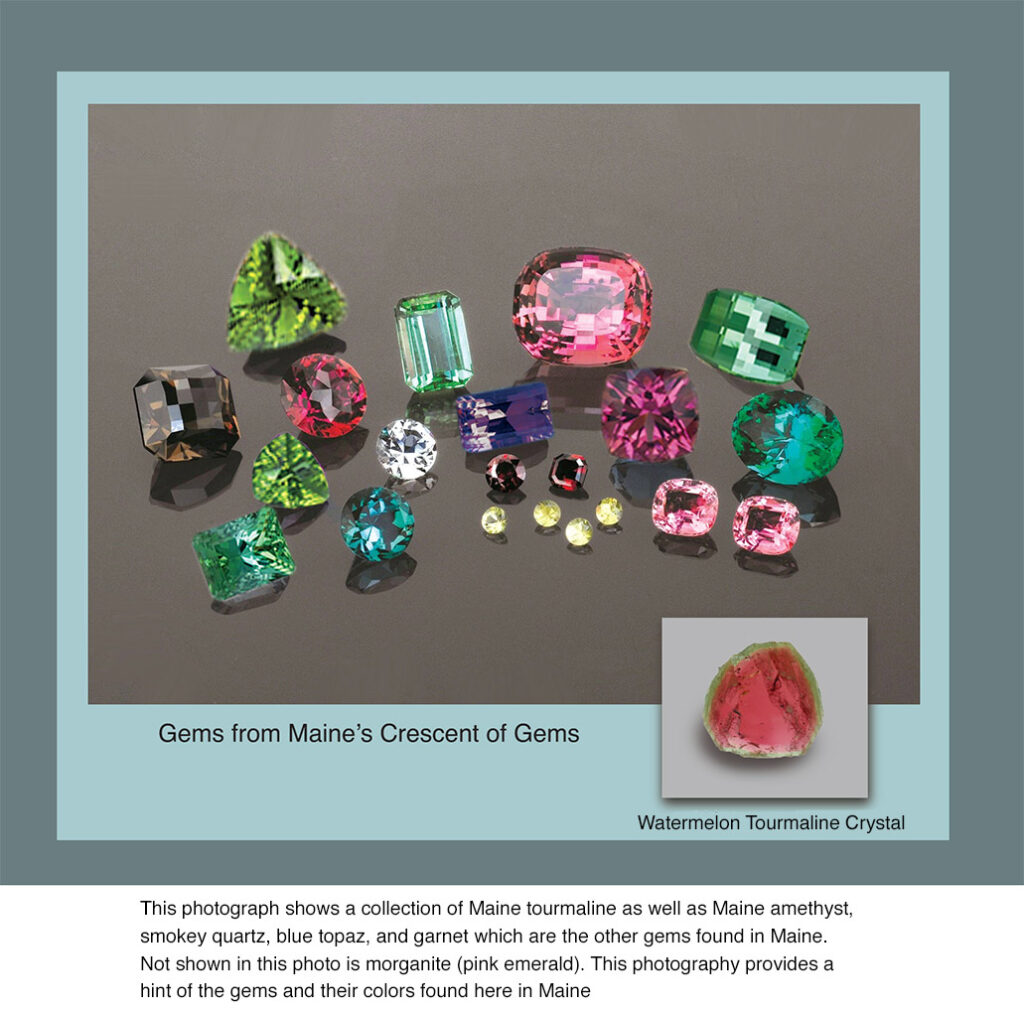Fast Free Shipping Anywhere in the USA
- Engagement Rings Engagement
- Wedding Rings Wedding
-
Fine Jewelry
Jewelry
More Ways To Shop
-
Collections
Collection
- Maine Coast Inspired Jewelry
- Maine Tourmaline Jewelry
- Clipper Ship Trade Wind Jewelry
- Garden of Eden East African Opal Jewelry
- Atlantic Sunrise Jewelry
- Blue Sky Topaz Jewelry
- Jewelry of the Heavens & Meteorites
- Christian Crosses
- Garden of Eden Green Garnet Jewelry
- Exotic Gems and Magnificent Jewelry
- The Kirkwood Antique Estate Collection
- Anniversary Jewelry
- Beach Dog Jewelry
- Earth & All Its Mysteries...
- The Treasure Island Collection
- Mysteries of the Sea
- The Fifteenth Case
- Maine Tourmaline Tourmaline
- Sapphires Sapphires

The Mount Mica Tourmaline Necklace
Made in the 1800’s
from Gems Found at Mount Mica
Paris, Maine
Mount Mica is America’s longest running ancient gem mine. Discovered in 1820 in Paris, Maine by a couple of kids out hunting for rocks and minerals. This gem mine has produced gems for jewelry stores and museums all over the world.
We at Cross have made hundreds of pieces of jewelry from the gems found at Mt. Mica (Mine #2), 50 miles north of Portland, Maine. Mount Mica was owned briefly by the group that mined Plumbago Mountain. They had a mining investment group that allowed serious mining for 12 years. One of the group, John, was a gem cutter who continued to cut Mount Mica tourmaline for another 20 years. Cross bought most of John’s gems.
Many of our forest green, teal, and blue tourmaline came from the Mount Mica investor group years.
Over 75 pieces of Mt. Mica tourmaline jewelry are shown on our website.
 Augustus Choate Hamlin
Augustus Choate Hamlin
Wrote The Book on Tourmaline
Imagine it’s the 1890’s and you’re the grandson of Elijah Hamlin. The man who discovered tourmaline on Mt. Mica in Paris Maine. You’re Augustus Choate Hamlin, the grandson of Elijah and you own the mine. Your mine at Mt. Mica is world-famous, studied for the tourmaline which is found here. Your gems have appeared in jewelry stores and museums around the world. You have studied law and you’re working on a book called The History of Mt. Mica and you want to create a necklace that will be remembered throughout the ages. The Harvard Mineral Museum bought the necklace and it is today at Harvard in Cambridge Massachusetts. It is on display from time to time.
This state of Maine necklace shows the colors of tourmaline found at this site primarily in shades of green, teal, blue, and occasionally pink.

Maine’s Mount Mica
and the Tourmaline Pin
The pin came to us from a couple who had bought a home on Paris Hill in Paris, Maine, one mile to the west of Mount Mica. Their story paralleled other stories we have heard. After they bought the house, they were expanding the kitchen. Kitchens in the day were often small. Banks were regarded as too risky so people secreted valuables in walls of their homes. This pin is the fourth story we’ve heard of gems hidden in a wall in Maine.
The pin features a large green tourmaline and four small gems done in a style similar to the Mount Mica Maine State Necklace. Cross bought the pin and put it into our private collection of antiquities.
Our presumption was that the tourmaline was from Mount Mica. The piece was probably commissioned by Augustus Choate Hamlin and sold to the family that lived in this house in the 1890’s. We are making a number of presumptions about the origin of the pinb and feel it’s 95% accurate. The pin is a pretty piece of jewelry.

America’s First Gem Discovery
in Maine’s Western Mountains
For 200 years, gems found their way from Mt. Mica to museums and jewelry stores all over the world, including Tiffany’s in New York. For most stores, gems lose their source identity. A tourmaline becomes just a tourmaline in green, pink, blue, or teal. We believe whenever possible, a gem’s origin is part of its history. Too often the source of the gem becomes lost.
Because we are close, knowing the mines and miners, visiting active mines gives us the inside track on the nearly complete family history of the gem. We share everything we know about our Maine sourced gems.
Following are Mt. Mica gems mounted as jewelry. We show over 75 pieces of Mt. Mica jewelry.

